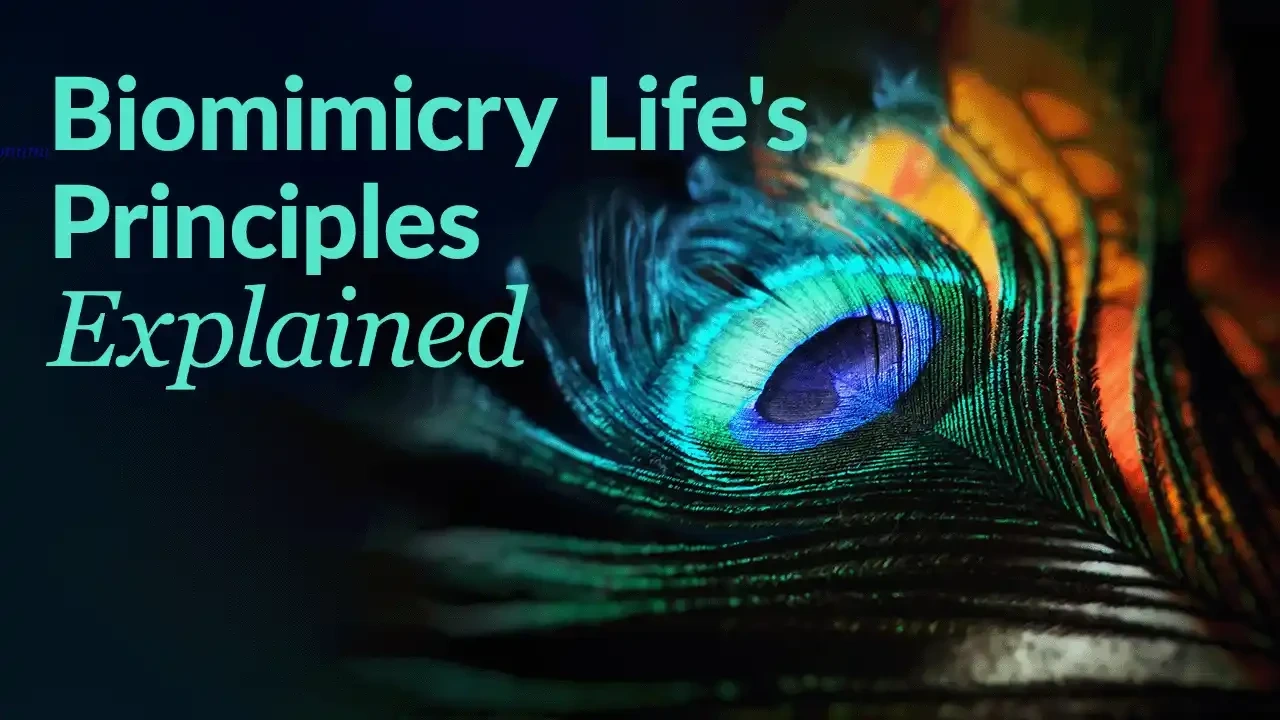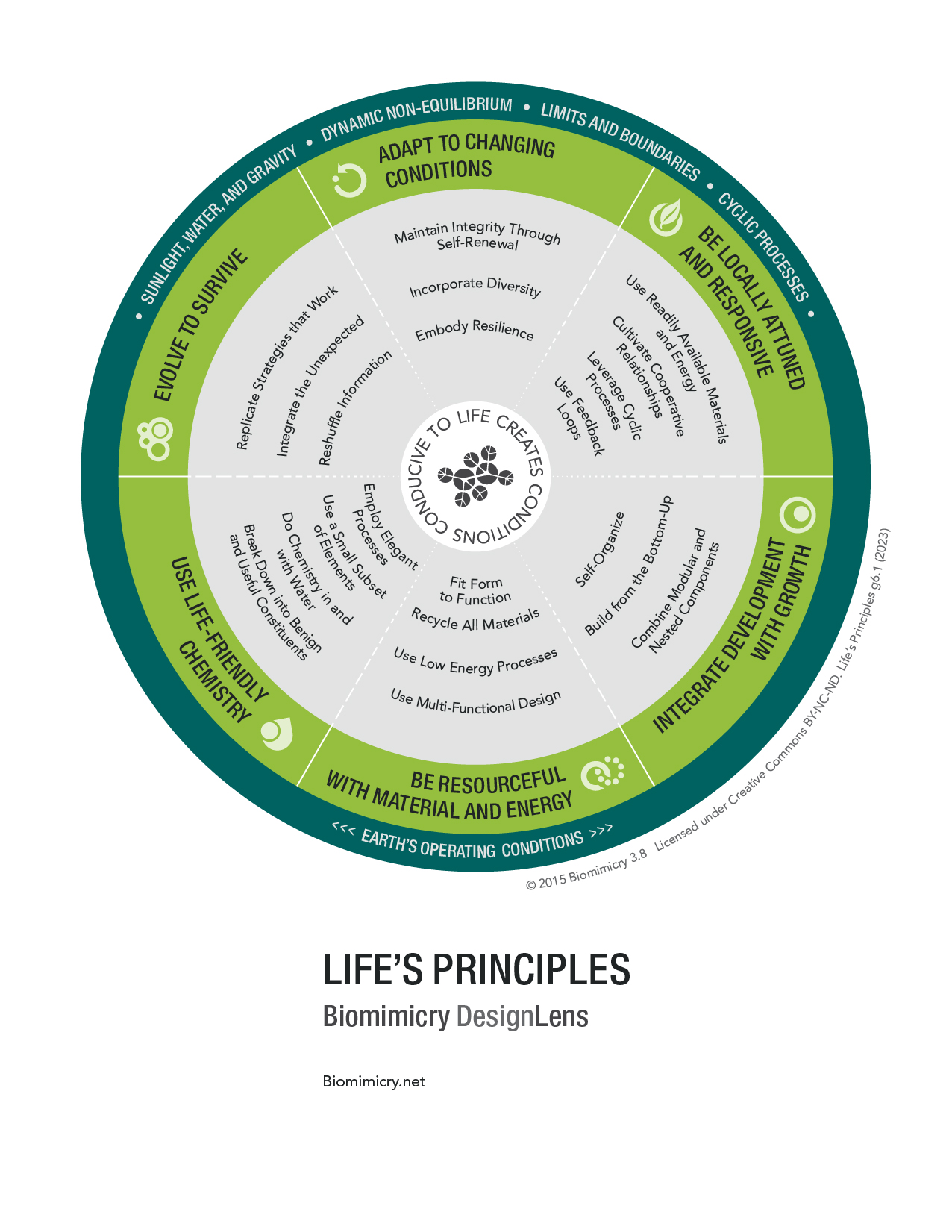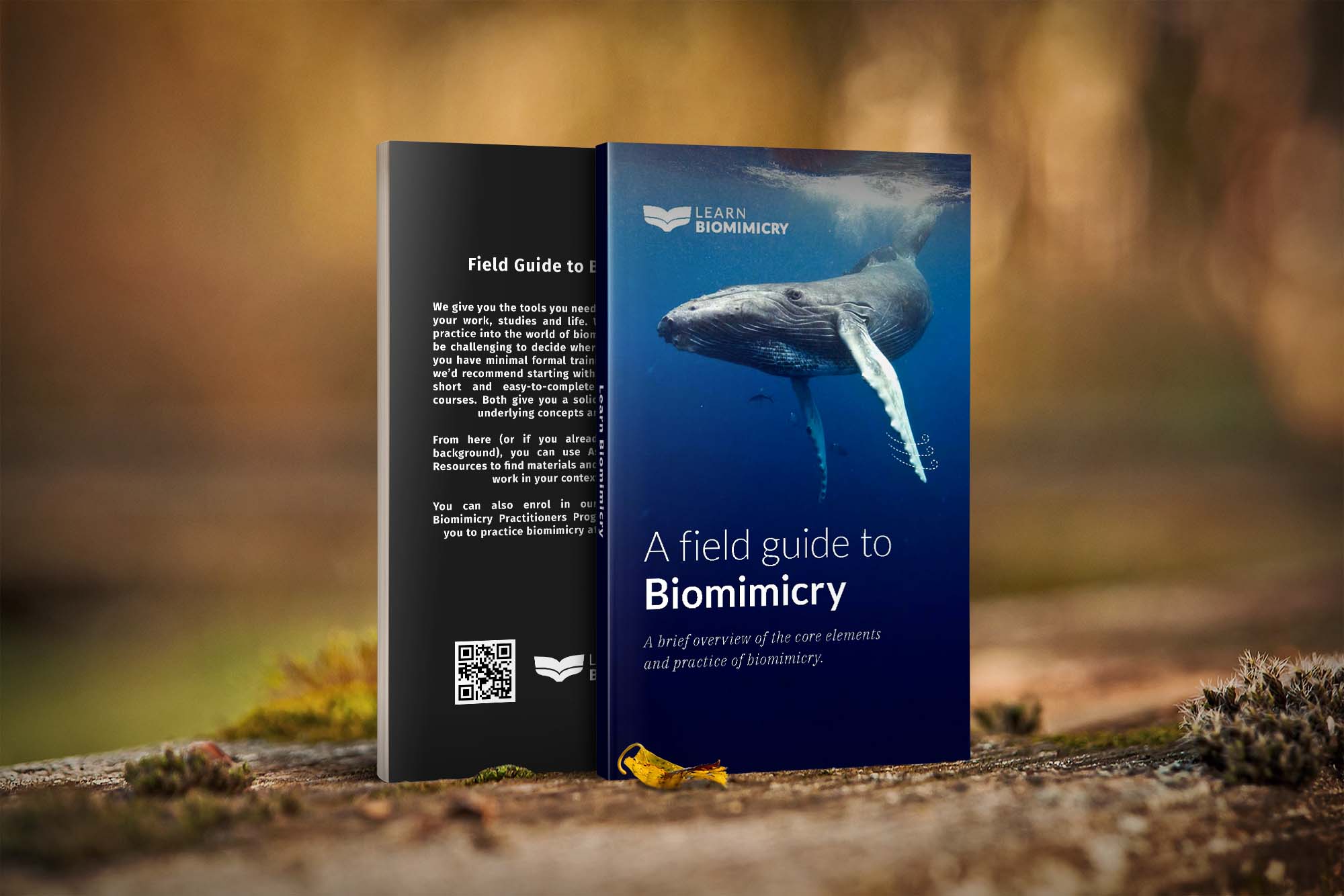The Biomimicry Life's Principles Explained

You may have been asked what’s your life's purpose before, but have you ever been asked, ‘what is the purpose of Life? Life's purpose is to create conditions conducive to life. Simple, yet profound and long-lasting.
What’s more interesting to note, is that there are a set of principles that are found consistently in just about every organism and ecosystem on Earth. And can, therefore, definitely be considered as winning strategies for surviving and thriving here. These are called: the Biomimicry Life’s Principles.
What are the Biomimicry Life’s Principles?
The Biomimicry Life’s Principles are a set of 27 strategies all organisms and ecosystems on Earth use for creating conditions conducive to life. They’re also a set of innovation principles that are beneficial to any organisation/design whether you’re focused on sustainability or not. The Biomimicry Life's Principles inform the Ethos and Measure components of biomimicry and are a tool for both ideation and evaluation.

Credit: The Biomimicry Life Principles - Biomimicry3.8
Biomimicry is the practice of learning from nature and then emulating what we find, and we do this by distilling the relevant principle from an inspiring organism/ecosystem - and then applying these within our designs.
They are abstracted from biological literature and translated into generic design language so that they can be usable by biodesigners and biomimics of our world. By incorporating these principles into an organisation’s design methodologies and system strategies, the resulting integrated strategies are inherently sustainable because they follow the same principles that allow life to thrive.
Why is it necessary to align biomimicry projects with the Biomimicry Life's Principles?
By aligning with them, designers ensure that solutions are not only inspired by nature’s forms but also follow its processes and ethics. This helps avoid superficial mimicry and promotes truly regenerative, context-appropriate innovations. The Biomimicry Life’s Principles serve as a benchmark for long-term viability. Without this evaluation, projects risk missing the core values of biomimicry and may fail to deliver sustainable, life-friendly outcomes in the real world.
Everyone doing a biomimicry project should evaluate it against these principles, to determine whether it is a true expression of biomimicry. (This process also forms a crucial part of our Biomimicry Practitioner Programme).
They’re one of the best Systems Thinking super tools you will come across.
Credit: The Biomimicry Life Principles - Biomimicry3.8
The 6 overarching Biomimicry Life’s Principles
- Evolve to Survive
- Adapt to Changing Conditions
- Be locally attuned and Responsive
- Use Life-friendly chemistry
- Be Resource Efficient
- Integrate Development with Growth
The History of the Biomimicry Life’s Principles
Life’s Principles are the result of the combined work of two decades of work by the biomimics, designers and biologists within and supporting Biomimicry 3.8. The origin of biomimicry Life’s Principles was a set of 9 principles described within Janine Benyus’s book, Biomimicry: Innovation Inspired by Nature (1997).
These original 9 Biomimicry Life's Principles were:
- Nature runs on sunlight
- Nature uses only the energy it needs
- Nature fits form to function
- Nature recycles everything
- Nature rewards cooperation
- Nature banks on diversity
- Nature demands local expertise
- Nature curbs excesses from within
- Nature taps the power of limits
They then were built upon by dedicated individuals who synthesised key biological principles from the biological literature and then translated these into a generic design language. This work took a number of years and five iterations so far.
Today, there are 27 Life's Principles.
The Full List of 27 Biomimicry Life’s Principles
Updated as of 2024
-
Evolve To Survive
- Replicate Strategies that Work
- Integrate the Unexpected
- Reshuffle Information
-
Adapt To Changing Conditions
- Incorporate Diversity
- Maintain Integrity through Self-Renewal
- Embody Resilience
-
Be Locally Attuned and Responsive
- Leverage Cyclic Processes
- Use Readily Available Materials and Energy
- Use Feedback Loops
- Cultivate Cooperative Relationships
-
Integrate Development with Growth
- Self Organise
- Build from the Bottom Up
- Combine Modular and Nested Components
-
Be Resource Efficient (Material and Energy)
- Use Low Energy Processes
- Use Multi-Functional Design
- Recycle All Materials
- Fit Form to Function
-
Use Life-friendly Chemistry
- Employ Elegant Processes
- Use a Small Subset of Elements
- Do Chemistry in and with Water
- Break Down Products into Benign and Useful Constituents
What Makes the Biomimicry Life's Principles Worth Using?
The Biomimicry Life's Principles are design lessons from nature. Based on the recognition that all Life on Earth is interconnected and interdependent, and subject to the same set of operating conditions, Life has evolved a set of strategies that have sustained over 3.8 billion years. The Biomimicry Life’s Principles represent these overarching patterns found amongst the species surviving and thriving on Earth.
Life integrates and optimises these strategies to create conditions conducive to life. By learning from these deep design lessons, we can model innovative strategies, measure our designs against these sustainable benchmarks, and allow ourselves to be mentored by nature’s genius using Life’s Principles as our aspirational ideals.
The power of these principles cannot be underestimated, and the gratitude that all biomimics and designers have for the people who distilled and refined them is great. If you are interested in their biological origin and the deeper theory behind them, we recommend learning this from Biomimicry3.8 and through their in-depth Biomimicry Resource Handbook – the original source of Life’s Principles teaching.
Never stop learning
Learn Biomimicry
PS - Check out the Biomimicry Short Course Set, which includes three sections - The Introduction to Biomimicry, The Biomimicry Life's Principles (with the Biomimicry3.8's blessing!) and the Biomimicry Masterclass.
Download your free eBook below
Visit www.learnbiomimicry.com/ebook to download your free eBook: A Field Guide to Biomimicry.
Kindly note that this offer is free for a limited time only.
For further reading, look into:


